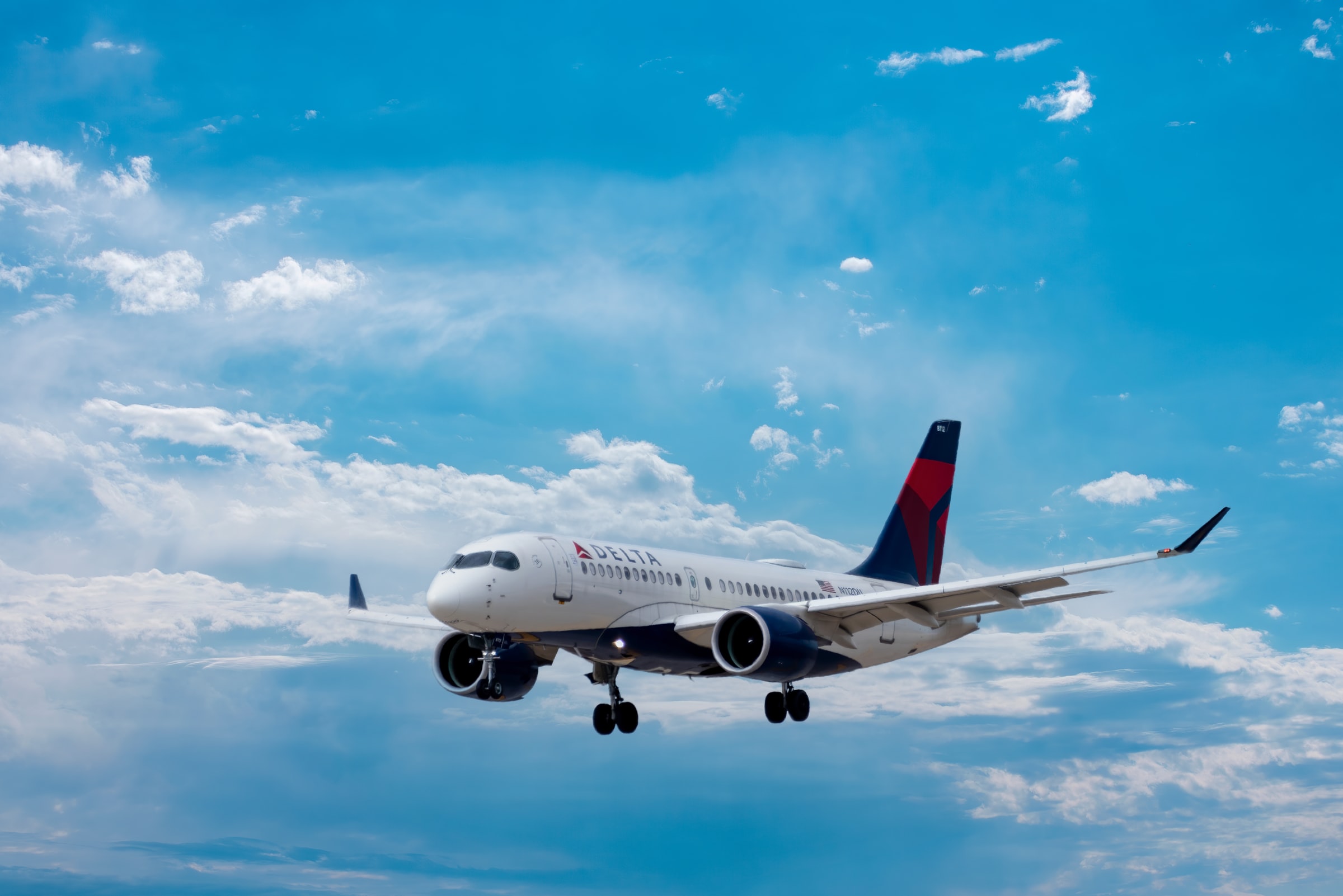Airlines are pushing full speed ahead in their transition to sustainable aviation fuel (SAF). Delta Air Lines recently signed a $1 billion deal to purchase SAF from Aemetis, a California-based producer of renewable energy.
The 10-year agreement is part of the airline’s wider effort to reduce its carbon footprint with a commitment to carbon neutrality from March 2020 onward. Delta plans to replace 10 percent of its jet fuel generated from fossil fuel with SAF by the end of 2030.
“Jet fuel is the number one contributor to Delta’s carbon footprint and the chief focus of our efforts to reduce our emissions and manage our environmental impact,” the company says on its website.
Aemetis is a renewable fuel and biochemicals firm that strives to replace traditional fossil fuels by converting first-generation ethanol and biodiesel plants into innovative biorefineries. Delta has committed to an offtake of 250 million gallons of blended fuel containing SAF. Production will take place at Aemetis’ renewable fuel plant in Riverbank, California. The blended SAF is expected to be delivered to Delta starting in 2024.
Delta’s announcement came on the heels of JetBlue’s $1 billion agreement in SAF offtake at its operations in the New York City’s airports. The agreement with bioenergy developing firm SG Preston will allow the airline to reach about eight percent SAF usage by the end of 2023 and place it ahead of its target to reach 10 percent in blended SAF usage by 2030.
The 10-year agreement aims for a delivery of 670 million gallons of blended SAF to JetBlue for its operations at LaGuardia Airport, John F. Kennedy International Airport and Newark Liberty International Airport. The airline expects to reduce its carbon emissions by 1.5 million metric tons with this deal.
“We are well past the point of vague climate commitments and corporate strategies,” said Robin Hayes, chief executive officer at JetBlue. “Earlier this year, we set specific, dated and aggressive emissions targets. And now we are physically changing the fuel in our aircraft to meet these commitments.”
In early September, The White House unveiled a detailed plan to help transition the American aviation industry into sustainable fuels. President Biden took a series of steps and executive actions with the goal to produce three billion gallons of sustainable fuel and reduce aviation emissions by 20 percent by 2030.
These include a new Sustainable Aviation Fuel Grand Challenge to promote the production of three billion gallons of SAF by 2030. The challenge includes new and ongoing funding of up to $4.3 billion to support SAF projects and producers, an increase in R&D activities to develop new aircraft efficiency technologies and efforts to improve air traffic and airport efficiencies, resulting in cleaner air. Overall, the grand challenge will expand U.S. leadership on a global scale.
Members of Airlines for America, an organization of commercial airlines that works with the U.S. government to shape policies and measures in the U.S. airline industry, have committed to meet the three billion gallons SAF goal by 2030.
Among passenger airlines, United Airlines has pledged to reduce its carbon emissions intensity by 50 percent from 2019 to 2035. American Airlines aims to procure 10 million gallons of SAF by 2025. While Alaska Airlines will purchase SAF to offset corporate travel and Southwest Airlines has partnered with the National Renewable Energy Lab to develop and commercialize SAF.
In air freight, FedEx, Atlas Air, Amazon AIR, DHL Express, and UPS have also announced plans for fuel efficiencies and carbon reductions.
“Current levels of domestic SAF production are approximately 4.5 million gallons per year, with the industry poised to grow rapidly,” stated the White House briefing. “To meet the challenge of scaling up to billions of gallons over a decade, both policy support and producer commitments will be critical to driving domestic innovation and deployment.”





